
If you haven't already read it; here is the continuation of Part 1.
14. Kiki’s Delivery Service (1989)
Director: Hayao Miyazaki
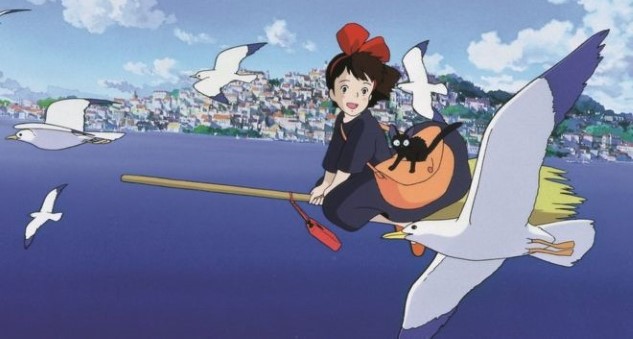
Based on Eiko Kadono’s popular 1985 young adult novel, Kiki’s Delivery Service is a cheerful and charming story of adolescent independence and growing up. Miyazaki’s fourth film under Studio Ghibli follows the titular Kiki, a 13-year-old witch who ventures out into the world from the comfort of her hometown for a year to begin her training as an adult. Noticeably lacking in any sort of antagonist or grand adventure, Kiki’s Delivery Service focuses instead on the everyday struggles of a young adult coming into her own, albeit with a magical twist. Finding a place to stay, securing a job, learning how to make new friends and taking on more responsibilities: these are the sort of stakes that define Kiki’s journey and make her story an endearing one. Miyazaki’s affinity for depicting flight shines through every scene of Kiki wrestling against the air current to steady her broom mid-flight, her dress billowing in the wind as she jets off in the film’s spectacular finale. Though all of Studio Ghibli’s previous films were modest critical if not financial successes up to this point, Kiki’s Delivery Service was a true watershed moment for the studio, becoming the highest-grossing film in Japan in 1989 and securing critical acclaim both at home and overseas. The film is a story of independence, positivity and the font of inner strength that compels every young person to go out into the world and build a life for his or herself. —Toussaint Egan
13. The Witches (1990)
Director: Nicolas Roeg
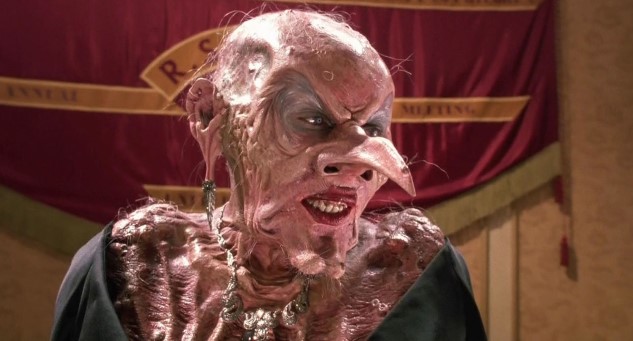
People have a tendency to somehow overlook the subversive, almost perverse nature of Roald Dahl’s sense of humor—you know, the guy who wrote George’s Marvelous Medicine, a book about a boy who tries to poison his grandmother—but it’s hard not to see it on display in The Witches, and particularly the film adaptation. This just happens to be one of the more macabre “kids movies” ever made, right up there in Return to Oz country. The grotesque, Jim Henson-conceived witch makeup is equal parts repulsive and goofy, and it’s hard not to feel uncomfortable watching the witches scratch madly at their open sores after removing their wigs. Make no mistake here, their goal is nothing short of the eradication of every single child on Earth, in ways both creative and cruel. In fact, once protagonist Luke is transformed into a mouse, the film becomes almost entirely a series of death-defying escapes—it’s like that harrowing Ratatouille sequence where Remy is almost roasted in an oven, except stretched out to feature length. Even that was ultimately not enough danger for Dahl, though, who objected to the film’s more upbeat ending, as opposed to the book’s rather devastating one. What a hardass. —Jim Vorel
12. The Love Witch (2016)
Director: Anna Biller

If you watch The Love Witch with no knowledge of its production or point of origin, you might assume it’s a lost gem of 1960s or 1970s supernatural filmmaking that’s only recently been recovered, restored and released to the public for niche consumption. This isn’t the case, of course, but nobody would fault your logic. Biller’s style is set in the bygone days of B-movie camp, though unlike similar faux-retro productions, à la 2012’s disingenuously nostalgic The Ghastly Love of Johnny X, there’s unabashed joy to her mimicry that reminds us how much fun the flicks The Love Witch emulates can be in spite of, or maybe because of, their badness. The film’s cheese factor is its single most obvious element next to Biller’s enthusiasm for kitsch and her emphasis on superb production design. Samantha Robinson’s ravishing (but equally deluded) witch in search of “true love” never stops to consider whether she has any idea of what those words truly mean, or what personal freedoms are okay to trample in the process. Unsurprisingly, there’s a horror element present in giving so much magical power to a person with such an infantile grasp of right and wrong—like the little boy in The Twilight Zone’s “It’s a Good Life,” you’d be wise not to upset her. —Andy Crump
11. The Little Mermaid (1989)
Directors: Ron Clements and John Musker
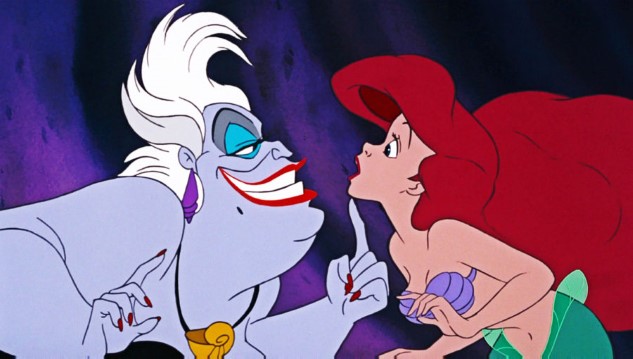
There’s no shortage of witchy adversaries in the depth of the Disney Vault, but Ursula is arguably the queen of them all. Certainly the “sea-witch” is integral to the plot of The Little Mermaid, and functions as the central node of the film’s bargain and “ticking clock” mechanic that Ariel must receive True Love’s Kiss within three days in order to avert catastrophe. She’s a witch in the truly arch sense of the stereotype—hanging out in an indisputably evil lair, ready to make Faustian deals with whomever might be unlucky enough to come along with an easily exploitable desire. She sings; she dances; she’s glam as hell—at least until growing into a giant kraken, in a finale that is genuinely more horrific than you probably remember. But that’s how you protect your head-witch-in-charge status. —Jim Vorel
10. Hocus Pocus (1993)
Director: Kenny Ortega
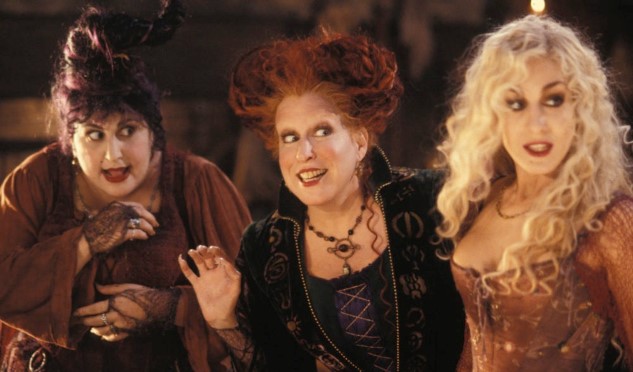
Hocus Pocus feels almost like a sister story at times to Roald Dahl’s The Witches—not quite as vicious, by any means, but its trio of Sanderson Sisters do still want to murder a bunch of kids, which is pretty hardcore as Disney goes. Largely ignored by both critics and audiences upon its initial release, the film proved to be one of those later bloomers that thrived in the nostalgic mind’s eye in the 2000s, when it became a cable Halloween season staple—the Halloween equivalent of It’s a Wonderful Life, if you will. The delightful viciousness of Bette Midler’s Winifred is a prime reason for why we’re still talking about the film today, as she found a way to combine her larger-than-life screen presence with a just a tinge of authentic menace. That the film simultaneously treats its witches as both antagonists and fish-out-of-water viewpoint characters serves to make them a loveable troupe of villains—how can you really hate these ladies after seeing them mistake an uncredited Garry Marshall for their demonic master? Thanks to the still-growing fervor for ’90s nostalgia, Hocus Pocus arguably feels more popular and relevant in 2019 than it ever has before. —Jim Vorel
9. Häxan, or Witchcraft Through the Ages (1922)
Director: Benjamin Christensen
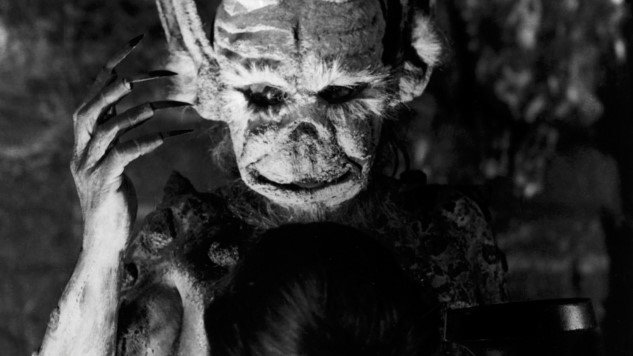
A truly unique silent film, Häxan is presented as a historical documentary and warning against hysteria, but in function it plays much more like a true horror film, especially considering the timeframe when it arrived in Danish and Swedish cinemas. Director Christensen based his depictions of witch trials on the real-life horrors codified in the Malleus Maleficarum, the 15th century “hammer of witches” used by clergy and inquisitors to persecute women and people with mental illness. The dreamlike—make that nightmarish—dramatization of these torture sequences were almost unthinkably extreme for the time, leading to the film being banned in the United States. But put simply: There’s imagery in Häxan that grabs hold of you and refuses to let go. Puffy-cheeked devils with long tongues lolling lazily out of their mouths. Naked men and women crawling and cavorting in circles of demons, lining up to literally kiss demonic asses. Scenes of torture straight out of Albrecht Dürer woodcuts or Divine Comedy illustrations. The grainy silence of black and white only makes Häxan more otherworldly to watch today—it feels like some kind of bleak Satanic relic that humankind was never supposed to witness. This is one silent film you won’t want on with children in the room. —Jim Vorel
8. Black Sunday (1960)
Director: Mario Bava
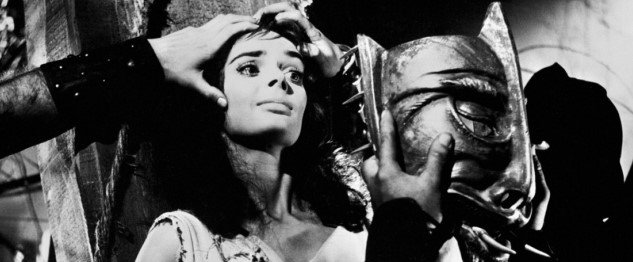
After years spent toiling as a cinematographer and (at times uncredited) co-director on an assortment of moderate to low-budget horror and sword-and-sandals productions, Mario Bava broke out in a big way with Black Sunday. Loosely (and I mean loosely) based on a short story by Nikolai Gogol, the film centers on the resurrection of a 17th century vampire-witch (Barbara Steele) and her paramour (Arturo Dominici) as they seek revenge on the descendants of the brother who executed her. Designed as a throwback to the Universal Monster movies of the 1930s, Black Sunday drew significant controversy for several gruesome sequences (including, but not limited to, the implementation of a spiked death mask and a moment where a cross is stabbed through an eye). Naturally, this kind of notoriety only intensified the film’s popularity. Though time has since lessened the impact of the gorier scenes, the movie still packs a huge punch with its nightmarish atmosphere, which is further accentuated by its vivid black-and-white photography and striking production design. An influence on filmmakers from Tim Burton to Francis Ford Coppola, Black Sunday remains a towering beast in the history of the horror genre. —Mark Rozeman
7. Rosemary’s Baby (1968)
Director: Roman Polanski
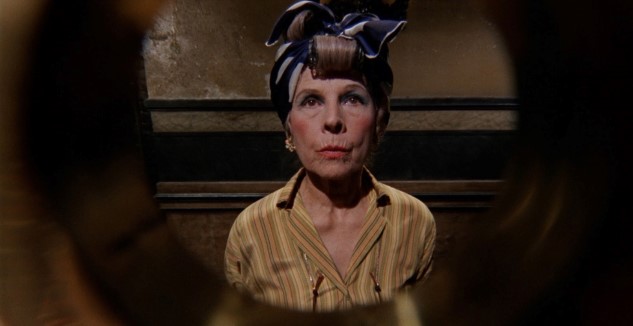
Rosemary’s Baby, horror classic though it undoubtedly is, may not be the first film one thinks of in a collection of “witch movies.” But what else does one call Ruth Gordon’s instantly iconic Minnie Castevet, if not a witch? This is a truly depraved soul in service of her dark master, but she comes to Rosemary in a guise that is chillingly mundane, that of the chatty next-door neighbor. Few films have done more to puncture that ’50s-era oversimplification of “neighborly” helpfulness than Rosemary’s Baby, nor done more to make an idealized past “when you didn’t have to lock your doors” seem more absurd. That’s all thanks to Gordon, whose inherent harmlessness, physical frailty, sashaying movements and staccato vocalization bely the steely composure we briefly see as Rosemary peers out at her unflappable face through the peephole. Gordon plays the character as one would in a stage play, overemphasizing her physical weakness and supposedly doddering mind, even as she plays a key role in stripping Mia Farrow’s Rosemary of all her agency and power to resist. Truly, of all the witches on this list, she’s one of the most calculating in her wickedness. —Jim Vorel
6. The Extended Potterverse
Directors: Various

J.K. Rowling’s modern reinvention of “witchcraft and wizardry” sought to, on some level, reclaim our knee-jerk, negative associations with the thought of “witches.” Rather than swell this list with 10 entries, including the most recent Fantastic Beasts franchise, we’ll instead consider them all as one—blockbuster, kid-friendly adventure films with individual highs (The Prisoner of Azkaban) and relative lows (The Chamber of Secrets). In particular, as far as classical female “witches” are concerned, the contribution of Rowling’s series was to imagine a world wherein the thought of magic was a bit less miraculous and a bit more practical, being ingrained organically into the fabric of everyday life. For Molly Weasley, magic is a helper that gets all the chores done in caring for an enormous clan of red-headed children. For Hermione, it’s a course of study, something to excel in academically and flex her raw intelligence. But of course, for some like Bellatrix Lestrange (or the bureaucratically malevolent Dolores Umbridge), magic is still a tool by which the user can dominate or destroy their enemies. There’s a great degree of freedom in the Potterverse as to what kind of witch one might choose to become, but you could say that the magical results tend to reflect that person’s inner character quite adroitly. —Jim Vorel
5. Howl’s Moving Castle (2004)
Director: Hayao Miyazaki

Howl’s Moving Castle was the Miyazaki film that almost didn’t happen. Conceived in 2001 amidst the height of Spirited Away’s success, Mamoru Hosoda was originally slated to direct the adaptation of Diana Wynne Jones’ 1986 novel before he and Ghibli had a falling out due to a conflict of creative visions. Miyazaki seized the reins and made the film his own, crafting the source material into a creative vessel through which he could forge his impassioned contempt for the then-ongoing U.S. invasion of Iraq into a parable about a fruitless magical proxy war between two nations in a steampunk fantasy setting. Howl’s is a whimsical if occasionally tepid adventure of a timid young woman who, after being cursed with the body of an old crone by a jealous witch, is rescued by a charismatic wizard who lives in a gigantic walking house. The film’s titular castle is one of Miyazaki’s finest creations, resembling a bow-legged fish armed with stumpy wings and turrets hobbling across the countryside and shuffling debris to and fro. To be sure, though its finale is a bit muted and the abrupt resolution of a love story in the movie’s denouement is a bit too neat and tidy, the film is a quintessential Miyazaki effort nonetheless that’s sure to please both newcomers and enthusiasts who might have somehow not seen it yet. —Toussaint Egan
4. The Wizard of Oz (1939)
Director: Victor Fleming

You can’t exactly put together a list of witch movies without the most iconic witch in the history of cinema, can you? Even during the years when The Wizard of Oz hadn’t quite claimed its modern classic status, it’s easy to see that the Wicked Witch of the West, as a character, had indelibly imprinted herself on the American psyche. The green face, the hooked nose, the pointed, warty chin—every physical characteristic of this particular witch, from her costume to her broomstick, became the standard template for pop culture witches in all the decades since. Only J.R.R. Tolkien can claim to have impacted the basic tropes of a genre (like the standard depiction of “orcs” and “dwarves”) in a way that is so fundamental and pervasive. Margaret Hamilton’s cackling, sumptuously evil performance as the gloating, aggrieved witch (they killed her sister!) rings with theatrical pomp. Surely there’s no more classic death scene than the witch being doused with a bucket of water, and then still having time to curse Dorothy a blue streak as she melts away—“Who would have thought a good little girl like you could destroy my beautiful wickedness!?!” —Jim Vorel
3. Spirited Away (2001)
Director: Hayao Miyazaki

What is it about Hayao Miyazaki’s Spirited Away that makes it one of his greatest—if not the greatest—films he has ever made? Perhaps it’s because the film represents the best expression of his most defining themes and concepts to date. The strength and perseverance of a young woman, the rapturous glory of flight, the spiritual struggle of personal and cultural amnesia with Japanese society, the redeeming power of love. Or maybe it has something to do with the crux of the film’s story being so archetypically identifiable, not so much a modern reimagining as it is a spiritual evocation of Lewis Carroll’s Alice in Wonderland, a childhood odyssey in a world that feels both familiar and foreign at the same time. Whatever the case, there is nothing quite like watching Spirited Away for the first time. The image of Chihiro, having discovered her parents transformed into pigs, running frantically through the streets as the town surrounding her comes to life as lights flicker into existence and spirits rise up from the earth is nothing short of magical. In the midst of all this—and serving as the prime mover for much of the action and threat—lies Yubaba, the other type of witch (as opposed to Kiki) Miyazaki has portrayed more than once in his movies, and she’s everything a menacing, yet complicated witch should be. —Toussaint Egan and Michael Burgin
2. Suspiria (1977)
Director: Dario Argento

Dario Argento’s 1977 Suspiria is the director’s best-loved movie, but it’s also his most atypical work. Unlike the rest of his peak-era filmography (its direct, uneven 1980 sequel Inferno excepted), it’s not strictly a giallo—the lurid murder mysteries Italian directors churned out in the mid-20th century—but instead an abstraction of the genre, removing the procedural narrative layer to replace it with pure aesthetic wonder. Plenty of giallo, like Mario Bava’s formative, drum-tight 1964 Blood and Black Lace, were gorgeous, but the occult-tinged Suspiria makes gorgeousness its primary concern. In that sense, in spirit, it’s closer to the gothic languor of French master Jean Rollin than any contemporary proto-slasher. From the film’s hypnotic opening sequence, which follows Suzy Banyon (Jessica Harper) as she takes a cab ride through a perfectly Grimm forest, the audience is bludgeoned with Goblin’s demented, baroque score and Luciano Tovoli’s phantasmagorical lensing. He and Argento used imbibition Technicolor film stock (unusual even in 1977) and innovative lighting techniques to achieve the film’s singular, Disney-inspired washes of red, yellow, blue and green—colors which become “the monster” of the film, a visible manifestation of the supernatural. Tellingly, when Suzy comes face-to-face with the film’s antagonist, the witch Helena Markos, Markos is invisible. Only her rattling, pained breathing marks her physical presence, but her insidious influence is everywhere, in every frame, drowning the world around her. Argento similarly corrupts the film’s formal structure: Goblin’s score wavers between diegetic and non-diegetic, while murder scenes become spiraling jump-cut departures from reality. Argento would go on to film sharper mysteries, and burrow further into self-reflexive madness, but Suspiria endures as his purest, most singular aesthetic statement. As such, it’s absolutely essential. —Astrid Budgor
1. The Witch (2016)
Director: Robert Eggers
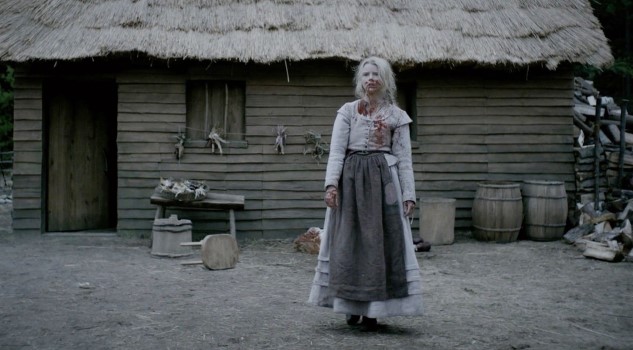
From its first moments, The Witch strands us in a hostile land. We watch (because that’s all we can do, helplessly) as puritan patriarch William (Ralph Ineson) argues stubbornly with a small council, thereby causing his family’s banishment from their “New England” community. We watch, and writer-director Robert Eggers holds our gaze while a score of strings and assorted prickly detritus. The wagon lurches ever-on into the wilderness, piling the frontier of this New World upon the literal frontier of an unexplored forest. It’s 1620, and William claims, “We will conquer this wilderness.” Eggers’ “New England Folk Tale” is a horror film swollen with the allure of the unknown. To say that it’s reminiscent of the Salem Witch Trials, which take place 70 years after the events in the film, would be an understatement—the inevitable consequences of such historic mania looms heavily over The Witch. All of this Eggers frames with a subconscious knack for creating tension within each shot, rarely relying on jump scares or gore, instead mounting suspense through one masterful edit after another. The effect, then, is that of a building fever dream in which primeval forces—lust, defiance, hunger, greed—simmer at the edges of experience, avoided but never quite conquered. —Dom Sinacola




















Comments
0 comment